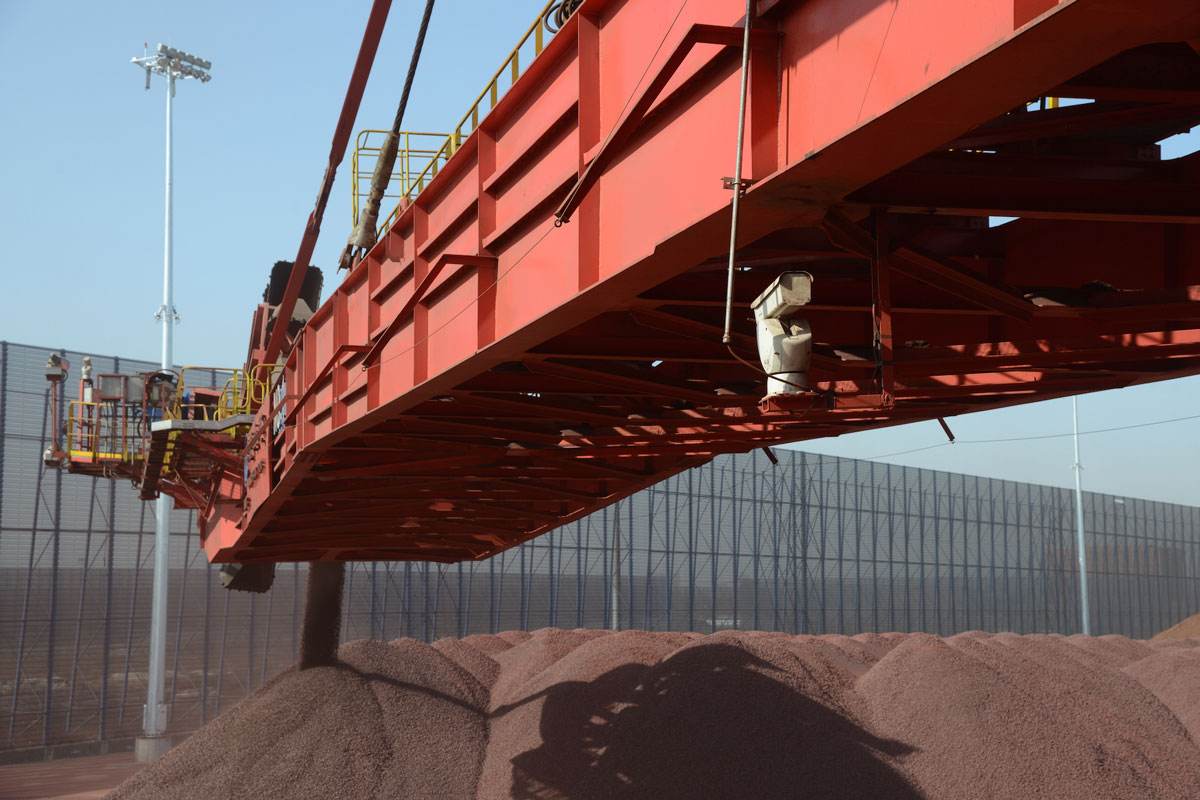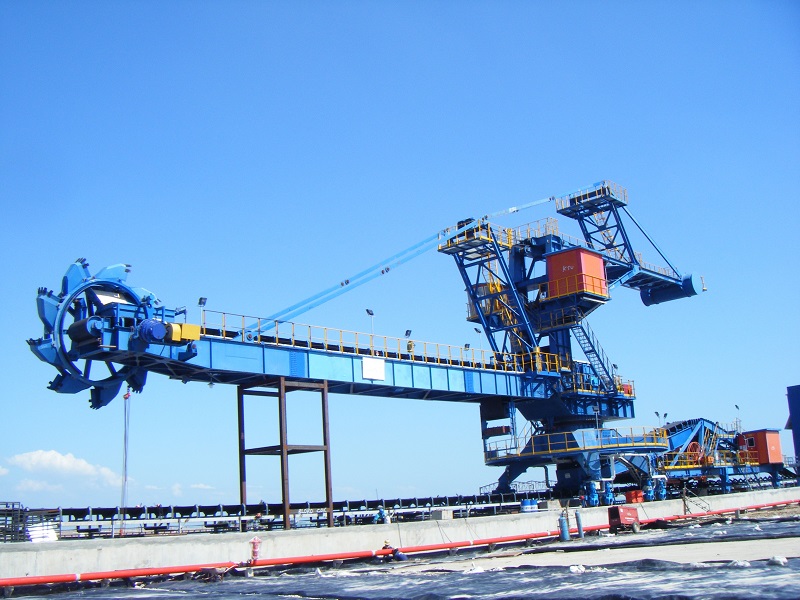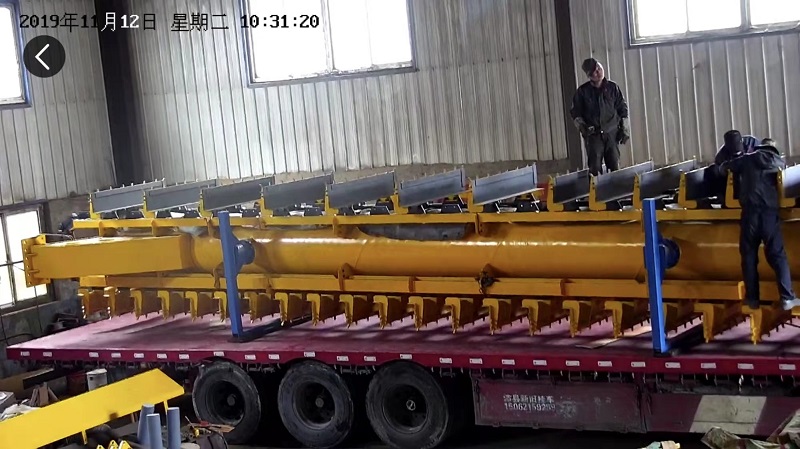What machinery is needed for material conveying
What machinery is needed for material conveying
Material handling is the process of transferring raw materials, semi-finished or finished products from one location to another. In modern industrial production, material transportation is a crucial link, because it can improve production efficiency, reduce manual handling, reduce labor intensity, and ensure the smoothness and stability of the production process. In order to achieve efficient material transportation, various mechanical equipment is required. The following is a detailed introduction of common machinery used for material conveying and its functions:
1. Belt Conveyor:
Belt Conveyors are one of the most common types of material handling machinery. It consists of a continuous belt material conveyor belt, usually made of rubber, plastic or metal. Downwards TransportationBelt Conveyor can transport various materials such as ore, grain, packing boxes, etc. in horizontal, inclined or vertical directions. Belt Conveyors are widely used in fields such as mines, ports, factories and warehouses.

2. Screw Conveyor:
A screw conveyor is a device that pushes materials forward through helical blades. It is suitable for conveying powdery, granular and small block materials, such as cement, feed, grain and so on. The screw conveyor has a simple structure and takes up less space, and can be designed according to the needs of different sites.
3. Bucket Elevator:
Bucket elevator is a mechanical device used to lift materials vertically. It consists of a series of buckets or containers, which are driven by chains or pulleys to lift materials from the bottom to the top. Bucket elevators are widely used in cement, mining, metallurgy and other industries to lift coal, ore, limestone and other materials.

4. Vibrating Conveyor:
Vibrating conveyors convey materials to their destinations by vibrating. It can be used for conveying in horizontal, inclined or vertical directions, and is suitable for conveying bulk materials, such as coal powder, ore, etc. The vibrating conveyor can realize continuous and uniform material transportation, and is suitable for high-speed transportation and frequent start and stop scenarios.
5. Spiral Conveyor:
Screw conveyor is a special form of conveyor belt, which uses a spiral-shaped structure to convey materials in horizontal and inclined directions. Screw conveyors are suitable for conveying bulk materials, liquid and powder materials, and are often used in chemical, food processing and other industries.
6. Chain Conveyor:
Chain conveyors use the motion of the chain to move material from one point to another. It is suitable for conveying heavy materials, such as auto parts, heavy machinery, etc. in the automobile manufacturing industry.
7. Stacker/Reclaimer:
A stacker is an automated mechanical device for stacking and retrieving. It is mainly used in ports, power plants, steel and other industries to stack bulk materials into piles or take materials from piles to achieve efficient stacking and storage.

8. AGV (Automated Guided Vehicle):
AGV is an automatic guided vehicle, which can navigate autonomously according to preset paths and procedures to realize automatic transportation of materials. AGV is widely used in warehousing, logistics, manufacturing and other fields, which improves the automation level of material transportation.
9. Pneumatic Conveyor:
Conveyor pipes use airflow to move materials from one point to another. It is suitable for conveying powdery, granular and liquid materials, and is often used in chemical, grain processing and other industries.
10. Scraper Conveyor:
A scraper conveyor is a mechanical device that pushes materials to a target location through a scraper. It is suitable for conveying in horizontal, inclined or vertical directions, and is mainly used for conveying bulk materials, powder materials and pasty materials.

To sum up, material handling is an indispensable part of modern industrial production. Various types of material conveying machinery and equipment can meet different scenarios and material conveying needs. Through reasonable selection and use of these machinery and equipment, enterprises can improve production efficiency, reduce costs, and achieve a higher level of automation and intelligent production.
 O'zbek
O'zbek slovenský
slovenský Azərbaycan
Azərbaycan Қазақ
Қазақ Latine
Latine ລາວ
ລາວ български
български नेपाली
नेपाली فارسی
فارسی Javanese
Javanese Українська
Українська Lietuvos
Lietuvos Română
Română Slovenski
Slovenski پښتو
پښتو Punjabi
Punjabi Bosanski
Bosanski Malti
Malti Galego
Galego Afrikaans
Afrikaans Esperanto
Esperanto 简体中文
简体中文 Српски
Српски मराठी
मराठी Ελληνικά
Ελληνικά čeština
čeština Polski
Polski ไทย
ไทย Nederlands
Nederlands Italiano
Italiano Tiếng Việt
Tiếng Việt Deutsch
Deutsch français
français русский
русский Português
Português Español
Español 한국어
한국어 Svenska
Svenska Malay
Malay اردو
اردو norsk
norsk Indonesia
Indonesia عربى
عربى Gaeilge
Gaeilge Türk
Türk Pilipino
Pilipino हिन्दी
हिन्दी Dansk
Dansk বাংলা
বাংলা English
English


What is a Metering Conveyor
In modern material handling systems, efficiency and precision are critical to maintaining smooth operations. Among the many specialized conveyors used in industries such as packaging, food processing, mining, and logistics, the metering conveyor plays a vital role. But what exactly is a metering conveyor, and why is it becoming increasingly important in production environments?
Read MoreJuli Engineering Gains Global Recognition Among Mining Conveyor Manufacturers
The mining industry relies heavily on efficient material handling systems to ensure productivity and safety in large-scale operations. Among the many solutions available, mining conveyors stand out as indispensable equipment for transporting bulk materials such as ore, coal, and aggregates. As demand for advanced solutions grows, Juli Engineering has established itself as one of the most reliable mining conveyor manufacturers, offering durable, high-performance systems tailored to global mining needs.
Read MoreDesign and Application of a Comprehensive Coal Spillage Handling System for Downwards Transportation Belt Conveyor
A belt conveyor with an annual production capacity of 3 million tons is installed in a main inclined roadway with a steep angle of 22°. During operation, issues such as coal overflow, spillage, and falling coal occur, particularly when transporting raw coal with high moisture content.
Read More